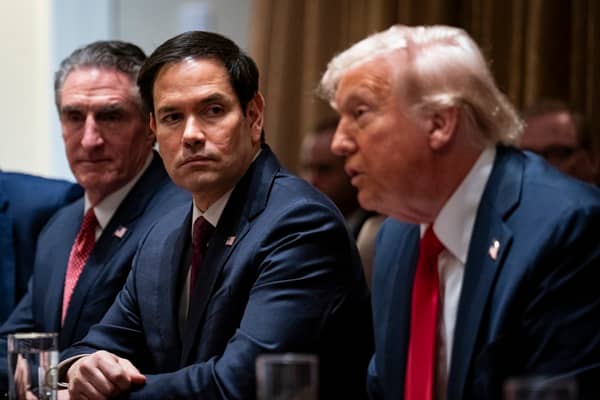Successful 21st-century workplace management is an increasingly complex task. Company leaders must oversee day-to-day operations, monitor industry trends, and execute strategic planning functions. An ongoing innovation focus helps the business maintain a favorable competitive position.
A talented, dedicated workforce sets the stage for continued achievement. Numerous United States companies have multiple generations of employees on the payroll. Senior corporate finance executive Jaimie Lowe details a multigenerational workforce’s benefits, challenges, and management strategies.
A multigenerational team offers four benefits
Working with team members from different generations offers multiple benefits. Senior corporate finance executive Jaimie Lowe details these four advantages, according to Udemy’s multigenerational research.
Skill set enrichment
Each generation contributes its own skill set to the team or department. When everyone can access new skills, higher overall efficiency and productivity can result.
Improved problem-solving capabilities
Multigenerational team members bring their own thoughts and perspectives to the mix. Taken together, these resources can inspire creativity and enhance the team’s problem-solving skills.
Higher innovation potential
Each generation possesses different attributes and focuses based on their relative professional experiences. As they’ve been active in the workforce for longer amounts of time, Baby Boomers contribute decades of experience and institutional knowledge. Gen Xers bring superb problem-solving skills, while tech-first Millennials and Gen Zers can leverage their innate tech capabilities to enhance operations and workflows. These combined capabilities set the stage for increased innovation.
Multiple mentorship opportunities
A multigenerational workforce can present an ideal mentorship platform. Team members of different generations can be matched together. Besides intentional knowledge-sharing benefits, these partnerships can create a stronger team bond.
A multigenerational team presents three challenges
A multigenerational workforce triggers three potential challenges. Senior corporate finance executive Jaimie Lowe offers insights into each unique scenario, according to works published by the Harvard Business Review and other social references.
Different workplace value systems
Each generation places its own value on workplace structural elements, likely based on their experiences to date. Likely in the workforce at a time where traditional hierarchy and structure were valued, Baby Boomers may be more used to this type of structure than individuals entering the workforce at a time of greater flexibility. For those individuals, a flexible workplace, ongoing education, and promotional opportunities may be viewed as more valuable than a traditional structure of hierarchy. Jaimie Lowe suggests that leaders acknowledge a variety of preferences and find common ground.
Multiple workstyle and schedule preferences
Every generation may have a certain workstyle preference, likely also based on their experiences within the workforce during developmental times in their professional lives. Baby Boomers might expect a Monday through Friday, 9 to 5 work week, used to such a traditional schedule. Gen Xers and beyond may prefer flexible schedules and work-life balance, enjoying the experience of shifting corporate mindsets that have welcomed this flexibility.
Company leaders may want to accommodate everyone’s workstyles and schedule preferences. However, a cohesive, productive workplace is also a priority. Jaimie Lowe emphasizes that negotiation and compromise may be necessary.
Diverse communication styles
Communication preferences may also be impacted by individuals’ experiences across various platforms and communication devices. For example, professionals used to in-office interaction may value face-to-face discussions and telephone chats. Conversely, tech-native professionals may prefer digital communications such as text messaging and email exchanges.
To enable smooth operations, Jaimie Lowe recommends that leaders respect each communication style. Concurrently, leaders should also identify channels that are acceptable to everyone.
Five strategies for managing a multigenerational team
Respecting each generation’s work-related preferences is key. That said, senior corporate finance executive Jaimie Lowe says five well-thought strategies can enable leaders to achieve company goals.
Steer clear of stereotypes
Each generation has inherited certain stereotypes, whether accurate or not. Therefore, leaders may expect those team members to think and respond in specific ways. For a more constructive outcome, leaders should honestly discuss each team member’s professional journey with them.
Establish clear communication protocols
Building a clear communication structure, and establishing response expectations, is important. Effective communication training, particularly for team leaders, is key. Leaders should also promote cross-generational collaboration and project-related communication.
Level the technological playing field
Cross-generational team members will have different technology adoption experiences. To achieve better team collaboration, leaders should implement universal digital skills training programs. These initiatives can also include cross-skilling opportunities. During the process, every team member’s concerns should be addressed.
Create cross-generational mentorships
Although traditional mentorships have value, cross-generational mentoring programs invite members of each generation to learn from each other. In hybrid workplaces, video calls and email threads can supplement in-person interactions.
Bring work-life balance into play
Each generation prioritizes work-life balance differently. To establish common ground, leaders should offer flexible work schedules. Next, they should adopt official work-life balance guidelines and team member expectations. Emphasizing the importance of self-care, and providing stress management resources, are also key.
Multigenerational workplaces are a “work in progress”
Over time, older generations will continue to retire as younger team members take on leadership roles. Technological innovation and workplace dynamics will also be in flux. Senior corporate finance executive Jaimie Lowe recommends that business leaders consistently fine-tune each multigenerational workplace.








